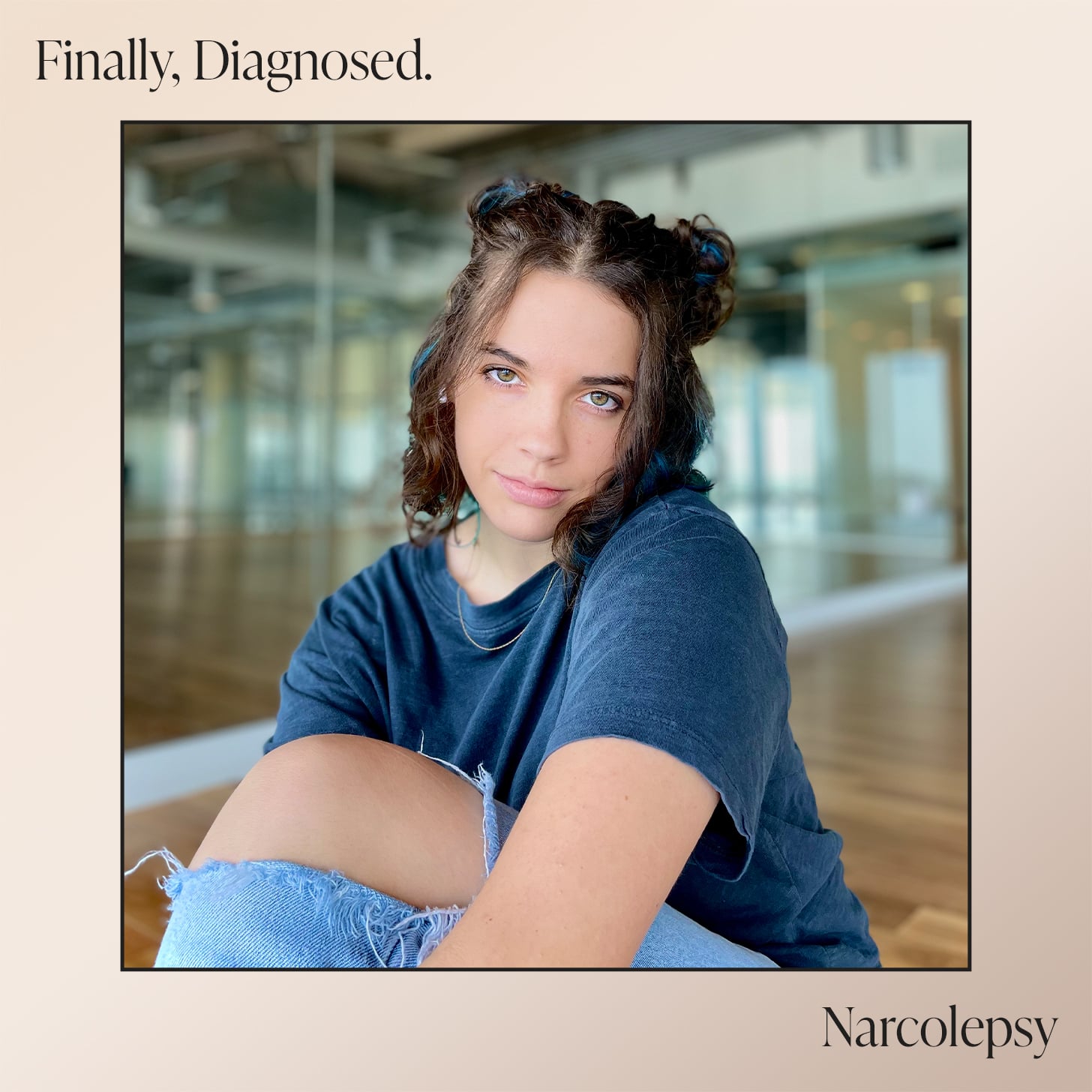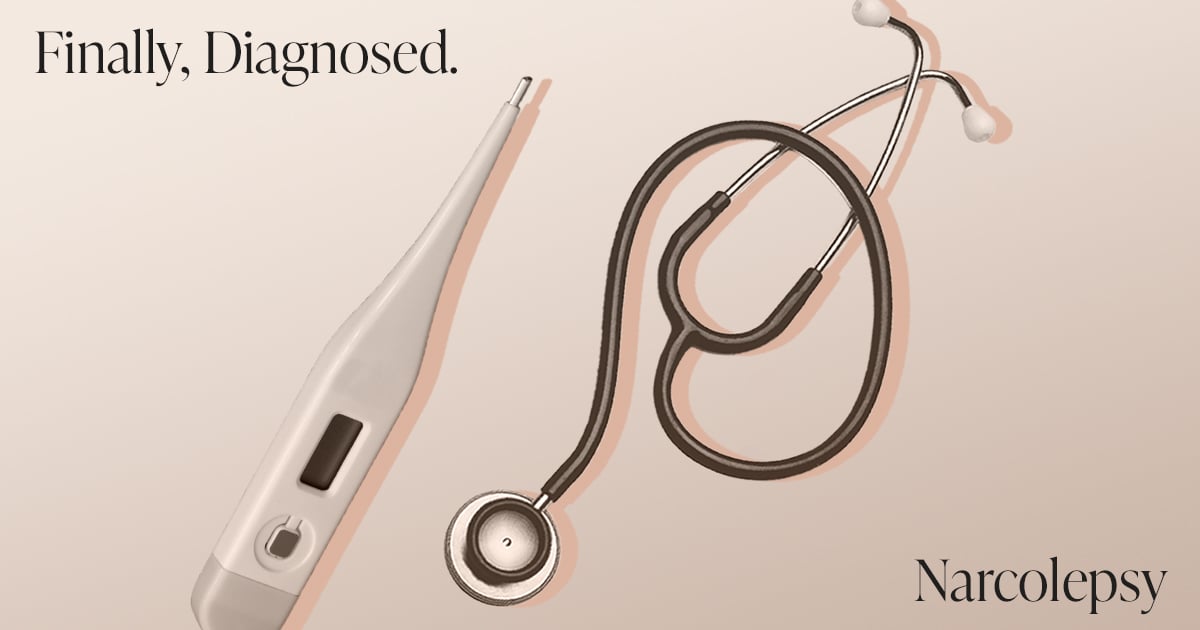Products You May Like

Jay Cook, 24, was in high school when she started to experience sudden bouts of sleepiness. “I was taking community college classes, and I’d drive 20 minutes away to the community college and come back, and I started to fall asleep driving,” she tells POPSUGAR. She thought it was something that happened to all busy 17-year-olds; she was in her junior year of high school and had a pretty packed schedule.
“I was waking up for basketball conditioning, then going to a class before school, then doing classes, and so I was like, ‘OK, yeah, I just do a lot and this is what happens to people who do a lot,'” she says. Plus, whenever she brought up her symptoms to her friends and peers, Jay was reassured that everyone else was tired, too.
When she went away to college, things got significantly worse.
There were very few classes at Brigham Young University that Jay managed to stay awake for. “I didn’t get most of my lectures,” she says. So she had to make friends quickly who were willing to share their notes. She also began having sleep hallucinations where she would wake up and still see or hear things from her dream. This happened about once a month. But she didn’t take things seriously until her junior year of college, when an incident on the freeway almost cost her her life.
“I’m driving through Lehigh, going 75 miles an hour, and I started to have the worst sleep attack of my life,” Jay says. The best way she can explain it? “It feels like when you shut down your computer, and you have lots of apps open, and it has to close all of the apps before it closes down,” she says. “So my brain was shutting down. My apps are closing, and I know I have like a limited amount of time to get off the road and get to a safe place.”
“I was going so fast, and there was no shoulder — I didn’t have any option but to do what I did.”
But at the time, there was construction on the freeway, and her nearest exit was closed. “I have adrenaline coursing through my body as I’m trying not to die as my head is bobbing, just going to sleep,” she says. Eventually, Jay made it to an exit, pulled off at a gas station, and slept for 45 minutes before continuing home.
“I was pretty shaken,” she tells POPSUGAR. “I was going so fast, and there was no shoulder — I didn’t have any option but to do what I did.”
A week before that, Jay had also fallen asleep while driving and ended up running a red light. “It’s a light that has mostly college students crossing to campus, and luckily nothing happened. But it got more real then because I could have killed someone else,” she says. That’s when a friend from her college improv group encouraged her to seek help.
@jgirlcook Surely I’m not the only one. . #narcolepsy #narcolepsyawareness #sleepingdisorder #morethantired #sleepingtips
Jay went to the student clinic, hoping for answers, but wasn’t taken seriously.
At this point, Jay was pretty certain she had narcolepsy. Her cousin had it, and the two had been discussing Jay’s symptoms. But when she went to the student clinic, she says, the doctor dismissed her.
She told him about falling asleep in class and while driving, and she explained her regular sleep hallucinations in detail. “I really felt good about how I advocated for myself, but he wasn’t there to listen,” she tells POPSUGAR. Instead, he said it wasn’t abnormal for college students to be tired, especially those with a history of depression, which Jay had mentioned earlier in the visit.
She reiterated that she wasn’t on medication for depression currently and that there was a history of narcolepsy in her family. But his recommendation was to see a psychologist. Fortunately, the psychiatrist listened to Jay and recommended that she see a sleep specialist for a sleep apnea test and sleep study. But neither of those were within Jay’s budget — she couldn’t afford it, and neither could her parents. So she decided to wait until she graduated, when she had a job and insurance of her own, to seek help again.
When she moved out to Dallas for her first job, Jay immediately searched for a sleep doctor.
The doctor had her do a sleep apnea test first, in order to rule out the condition. Then, Jay was given a sleep study to test for narcolepsy.
The sleep study took place overnight, starting around 7 p.m., and lasted until morning the next day. Jay says she was hooked up to several machines to monitor her movement, brain waves, and sleep level. When she woke up at 9:30 a.m. the next morning, she remembers being in a state of confusion. “I had slept for over 10 hours,” she tells POPSUGAR. But the test wasn’t over yet. The staff then prepared her for the daytime nap study, or the Multiple Sleep Latency Test, which is used to diagnose narcolepsy specifically.
“The MSLT is comprised of 4-5 trials or ‘naps’ spaced throughout the day. During the test, you’re asked to relax and try to fall asleep,” per Stanford Medicine. During this test, experts try to measure sleep latency (the average time it takes you to fall asleep) and the number of REM periods. “Documenting REM in two or more of the trials can be a positive indication of narcolepsy when used in combination with a clinical history,” according to Stanford.
Three weeks after her sleep study, Jay was called back to the specialist’s office. She recalls being told: “There was enough evidence to diagnose you with narcolepsy. In your fourth and fifth nap, you hit REM in under three minutes.”
And at first, she felt a sense of relief — “like, everything I had been struggling with, there was an answer for,” Jay explains — but what she didn’t anticipate was the “dread and sadness” that followed her diagnosis.
There is no cure for narcolepsy, so Jay spent the next few months after being diagnosed trying to find the right balance of medication for management. She started on modafinil, a common oral medication used to help those with narcolepsy stay awake. But Jay says it didn’t do anything. Then her doctor prescribed armodafinil, which is also used to improve wakefulness. But instead, Jay started experiencing adverse side effects, including severe panic attacks. “I called my sleep doctor, and I was like, ‘Hey, I literally feel like I’ve been having a panic attack for two weeks. I feel like a crazy person.'” Her doctor recommended she stop taking them immediately.
Today, Jay focuses on more holistic management tools.
For starters, she uses caffeine as a primary stimulant to help gain more control over her sleep cycle, being mindful of how much and when she consumes it. She also tries to stick to a set bedtime every night, as well as a whole foods diet, which has been shown to predict favorable sleep outcomes. Essentially, when she is sleeping, Jay tries to ensure it’s the best sleep she can get.
It’s also been helpful at work to be open about her condition. Fortunately, she says, she’s had very flexible employers who don’t mind the fact that she needs to take a nap sometimes. “It’s still hard when you’re falling asleep, on set or in meetings; that’s always a little bit embarrassing,” Jay says. But she’s tried to prioritize self-compassion.
“Getting mad at myself and being really upset about how my body is doesn’t do anything except for bring negativity and sadness,” she says. “But just knowing that my body is giving me everything that it can, and just meeting it where it’s at and giving myself love, has actually helped me change for the better.”
@jgirlcook It’s almost like it’s not a choice. 😅#narcolepsy #narcolepsyawareness #narcolepsynotalone #morethantired #sleepingdisorder #ihavethisthing
Each year in the US, an estimated 12 million adults who receive outpatient care are misdiagnosed, and oftentimes, those patients fall within a minority identity, including women, nonwhite Americans, and those within the LGBTQ+ community. That’s why we created Finally, Diagnosed: a monthly series dedicated to highlighting the stories of those who’ve been overlooked by their doctors and forced to take their health into their own hands in order to get the care they deserve.
Image Sources: Jay Cook and Photo Illustration by Aly Lim
